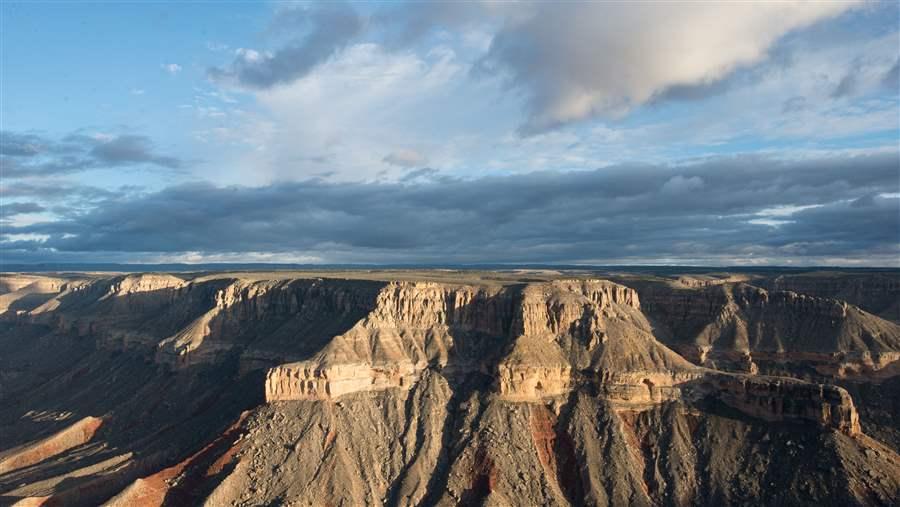Protect the Grand Canyon From Mining Threats
 Kristen Caldon Photography
Kristen Caldon PhotographyThe Grand Canyon
In 1918, the U.S. Congress passed a bill to designate the Grand Canyon as this nation’s 15th national park.
In northern Arizona near the Utah and Colorado borders sits one of the great wonders of the world: the Grand Canyon. Its mile-deep gorge can be seen from space, and its rugged landscape and wild river are a testament to the richness of our public lands. People travel from all over the country—and the globe—to experience this natural wonder, which is an American treasure.
In 1918, the U.S. Congress passed a bill to designate the Grand Canyon as this nation’s 15th national park, and President Woodrow Wilson signed it into law. This action set aside a special landscape for future generations but overlooked the need to safeguard the larger watershed north of the park, which would ensure that the Grand Canyon’s rivers and springs would be forever protected as well. Because this area is located just 6 miles from uranium mining, its waters, landscape, and a host of sacred and cultural treasures are threatened.
The watershed’s deep canyons, lush pine forests, wild river, underground springs, and grasslands provide myriad benefits. Millions of people downstream depend on the Colorado River for clean drinking water; the remnants of ancient high desert ponderosa pine forests survive here; and native wildlife—including mule deer, mountain lions, and endangered California condors—find refuge. Safeguarding this place would also preserve an important wildlife corridor between Grand Canyon National Park and Utah’s Grand Staircase-Escalante National Monument. This vast and remote landscape offers countless opportunities for outdoor recreation and spiritual renewal, with visitors from around the world generating millions of dollars for the economy each year and supporting thousands of jobs.
A broad coalition of Native American tribes, businesses, sportsmen, Arizonans, and conservation organizations from across the country has banded together to ask for the larger watershed’s permanent conservation as the Greater Grand Canyon Heritage National Monument. On Nov. 5, 2015, Representative Raul Grijalva (D-AZ) introduced legislation to designate roughly 1.7 million acres of this area as a national monument, protecting it from new mining and clear-cut activities and ensuring the preservation of sacred tribal sites, historic artifacts, and other cultural resources residing there.
If Congress is unwilling or unable to pass this important legislation, Pew stands ready to work with local supporters, including elected officials, veterans, and faith-based groups, to seek designation of this national monument through the president’s authority under the Antiquities Act.
Magnificent U.S. public lands, including the Grand Canyon and its watershed, are among our country’s most precious resources. They are our birthright, and also our responsibility to protect.
Now is the time to fully safeguard this natural wonder of the world. As President Theodore Roosevelt, considered our conservationist president, once said:
“The Grand Canyon fills me with awe. It is beyond comparison. … Let this great wonder of nature remain as it now is. … You cannot improve on it. But what you can do is to keep it for your children, your children's children, and all who come after you, as the one great sight which every American should see."






